Mania has been known to mankind since antiquity - the manifestations of this mental disorder are too characteristic and colorful, and the people who suffer from them cannot go unnoticed. Recently, experts have argued that the number of people suffering from manic episodes and manic syndrome is growing rapidly, along with an increase in the number of depressions. Some researchers claim that this is the reckoning of humanity for progress.
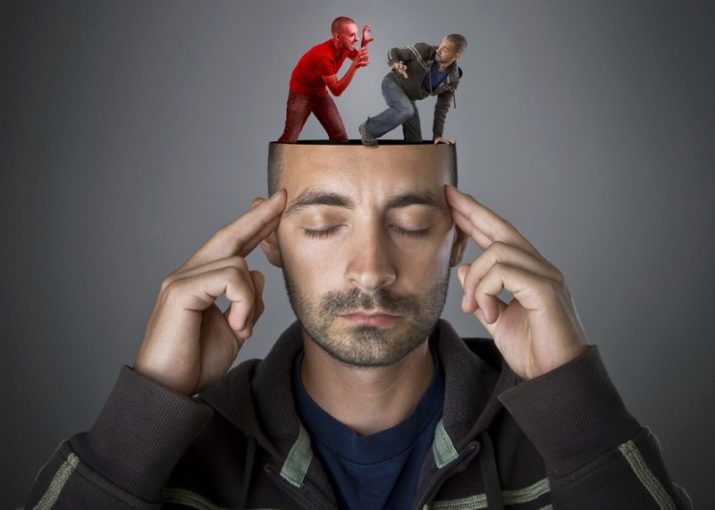
What it is?
Mania is a mental disorder in which a person is obsessed with some idea, passion, desire or conviction so much that he loses control of himself. This is accompanied by psychomotor agitation, a state close to euphoria. The craving for the subject of passion is so great that it does not obey the will of the patient, in most cases he cannot control it. In ancient Greece, healers determined people with mania only by their appearance: an obsessive look, noisiness, noisy, uncontrollable attraction. In the Middle Ages, doctors attributed mania to hysteria, and modern experts distinguish manic disorder as a separate type of mental disorder.
Mania (translated from Greek - “passion”, “attraction”) may be part of a wordfor example, oniomania is a painful passion for shopping (shopaholism), and can be a separate symptom that will be used to describe the signs of many mental disorders.

And there are enough of them - mania is characteristic of patients with schizophrenia, people suffering from obsessive-compulsive disorder, delusions and paranoid disorders often accompany mania.
WHO has estimated some 450 million people who suffer from mania. Manic behavior is sometimes adjacent to genius. Many famous historical figures suffered from various types of mania. Outstanding mathematician John Nash suffered from delusions of grandeur, which is also called delirium of greatness. The illness forced him to refuse the offer to take a solid academic post, and all only because Nash firmly believed that he should soon become the emperor of Antarctica.
Severely manic-depressive psychosis suffered Nikolay Gogol. The writer could lie motionless for several weeks, without leaving home, without talking to anyone. He himself described his condition, and ultimately it was he who killed him - after two weeks of lying Nikolai Vasilyevich died of exhaustion.
Mania of persecution from adolescence was observed in the Russian poet Sergey Yesenin. He often admitted that everyone was whispering behind him, intrigues and intrigues were being built against him. The situation was aggravated by hereditary alcoholism.

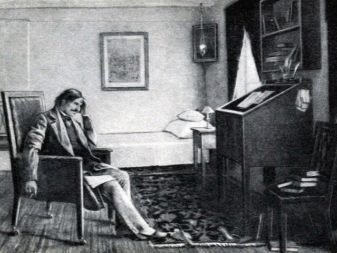
The writer also had a specific mania. Maxim Gorky - He suffered a painful craving for vagrancy, combined with pyromania. He often changed places of residence. He also had a clear suicidomania - Gorky made several suicide attempts.
American writer suffered persecution mania Ernest Hemingway. He believed that he was the object of surveillance and they wanted to kill him. Tired of obsessive thoughts, exacerbating the situation by exorbitant alcohol libations, the writer committed suicide by shooting himself with a gun.
Manic-depressive disorder suffered composer Ludwig van Beethoven. He tried to treat himself with "dirty thoughts" with opium. Perfectionism and mania to bring everything to the end, the inventor suffered at all costs Nikola Tesla. Starting to read Voltaire, for example, he immediately stated that he did not like the book, but manically read it, and another 100 volumes of this author.
Kleptomania (a painful craving for theft) suffers Hollywood actress Winona Ryder. She was detained several times for shoplifting and placed on forced treatment.


Symptoms and methods for their diagnosis
Mania in any form is accompanied by external symptoms and signs that are the result of overexcitation of the brain. All signs can conditionally be divided into mental and physical. At the mental level, the behavior of a person with manic syndrome is accompanied by a “swing” - unbridled gaiety, which is replaced by hopeless longing, depressive attacks can occur with attacks of unmotivated rage, aggression, illogical spontaneous actions. Abnormal behavior is also accompanied by an exacerbation of all feelings. Thoughts are messy, confused, jump from one to another, it is difficult for a person to concentrate. But the current thought for him is a super idea, and therefore delusions are possible.
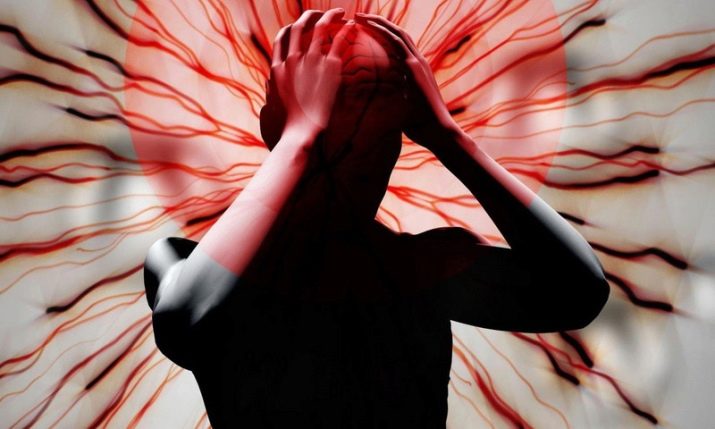
Psychiatrists characterize a classic patient with one or another mania as an “open-minded person” - all emotions are splashed out, even if from the outside it looks like an extreme degree of restraint. In some cases, hallucinations may occur.
Much depends on the degree of the disease. In the subacute stage, which is also called manic arousal, a person still manages to control himself. He is aware that his drives or ideas have nothing to do with normal behavior. True, this understanding does not facilitate his condition - thoughts, desires, moods cannot be controlled by the patient. A simple degree and acute (with delirium) are also distinguished. Symptoms of the disorder increase accordingly: from the slight insanity in which a person looks like an eccentric to the real madness in which normal thoughts are completely replaced by delusional ones.
Also, the patient's behavior depends on the framework of the disease in which mania arose. If we are talking about the most common bipolar disorder, then a person can be called a jovial and joker. He often dwells in euphoria, talks a lot, actively moves, he constantly has many completely crazy plans, he can clutch at several things at once, but not one of them is brought to his logical conclusion. It is noteworthy that in people with this form of manic state, appetite and irrepressible sexual desire are almost always increased. With such a course, mania is often accompanied by delusional statements and hallucinations.
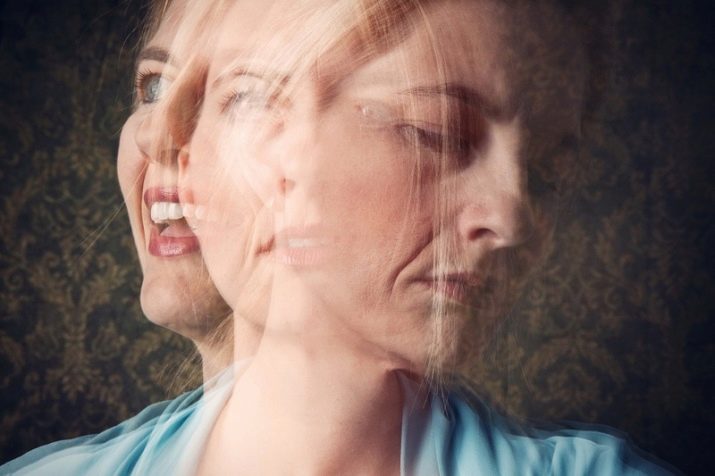
By the nature of the emotional component, mania can be angry and aggressive, joyful, chaotic (with it, a person cannot complete not only the things that have been started, but also the thought process that has begun). Hypochondria mania is a pathological fear of getting sick, dying while a person is completely healthy physically.
Social mania is manifested in the strange, unhealthy behavior of a person in relation to others. For example, there are patients literally obsessed with ideas of purity and order. Try to drop at least a crumb of bread in the kitchen of such a person - and until recently you will see a cheerful and sociable owner in a fit of extreme anger, after which he may even become depressed. The basis of strange behavior are obsessions - obsessive thoughts. And if at first it’s enough for a person to just do the cleaning and calm down for a while, then gradually the need to clean up becomes constant. People with a mania of cleanliness can often wash their hands for hours and nothing will make them distract from this activity. They can jump in the middle of a workshop or at a party if they think their hands are dirty and close in the bathroom for several hours. Social mania cause a lot of suffering to the relatives of a sick person - with manic stubbornness, he demands that all members of the household adhere to his rules (in this case, to maintain cleanliness). At the slightest objection or disobedience, the anger of a manic patient knows no bounds.
Shopaholism also belongs to social mania - an obsessive desire to constantly shop. Very quickly, the shopaholic's family begins to experience what huge debts, mortgaged property, a lot of unnecessary things bought up at the nearest store. Asocial mania is the most dangerous condition. Homicidomans, for example, have a strong desire to kill their own kind. Addicts, drug addicts can kill and take any other antisocial act, if it brings them closer to their own goal - to get the desired “buzz”, a dose of the drug.


Psychotic mania - disorders against the background of mental illness. They are numerous, there are both safe for others, and quite risky violations. In megalomania, for example, it seems to a person that the center of the Universe is just him. With megalomania, man himself believes in his superiority over a group of persons or all of humanity. He behaves accordingly. The mania of persecution makes a person constantly run away, hide or defend - he believes that he is being persecuted. People with “Plyushkin’s disease” drag any rubbish and rubbish specially collected on the street into the house. They sincerely believe that all this will come in handy one day. This group of mania includes necromania (desires to defile corpses) and kromromaniya (craving and addiction to fecal masses in any of their manifestations).


Such mania are found mainly in organic brain lesions and serious diseases: schizophrenia, severe mental retardation.
List of Mania
Modern psychiatric guides include several hundred varieties and types of mania, who got their names on the subject of delirium or obsessions.
- Ablutomania - pathological craving to wash your hands constantly.Most often associated with ablutophobia (fear of being or seeming dirty). Hand washing and control of their cleanliness in total take most of the time in the days of the patient.
- Agromania - the desire to live alone in nature. If a person does not have such an opportunity, he will constantly run away and leave the city for no apparent purpose, spend the night in the field.
- Idoyomania - excessive pathological sex drive. Thoughts about sex haunt the patient constantly. Even if you can often have sex, sexual intercourse does not satisfy the obsession.
- Arithmania - a passion for counting, numbers, numbers. A person considers everything and everything, constantly, can number matches in a box or spend hours adding up numbers from a receipt for housing services in his mind.
- Bibliomania - pathological craving for reading, for books. A person can assemble such a library at home that he will have nowhere to put a bed for himself, or read for several days, forgetting about sleep and meals. Such patients can spend whole days in a bookstore simply by examining volumes.
- Brooksmania - the desire to grind one’s teeth while awake. It’s rather difficult to be near such a person - the vast majority of people cannot stand such a sound.
- Geomania - an obsession to eat earth, sand, clay, grass. Often the patient thus imitates animals.
- Homicidomania - The strongest craving to kill people. The diagnosis requires isolation of the patient in a closed psychiatric ward, since the person poses a real danger to others. Unfortunately, in 70% of cases, the presence of such a diagnosis is already known as part of a forensic psychiatric examination in the investigation of a murder or a series of crimes.
- Graphomania - Uncontrolled desire to write. Sometimes writers, journalists, and all for whom writing a text is a profession are called graphomaniacs. This is a false comparison. A real graphomaniac sometimes writes completely meaningless things not at all for someone to read them, but in order to satisfy his desire to write.
- Dacnomania - an obsessive desire to bite. Moreover, most often the patient wants to bite the people around him. He can pounce and bite a passerby, a passenger in a transport, a neighbor.
- Demonomania - absolute conviction that inside a person lives an impure force. Sometimes demonomanians suspect an obsession with those around them, constantly trying to find signs of demon instillation in the behavior of loved ones. And each time they find it successfully.
- Dermatomania - A dangerous form of disorder in which a person tries to inflict physical damage on himself by biting himself, pulling out hair and nails.
- Doromania - an obsessive need to give gifts to others. Patients can literally drive anyone crazy, because they will bombard him with necessary and unnecessary things.
- Dromomania - the need to wander. A person can regularly leave home for no apparent reason, be among the homeless, in antisocial companies, eat out of the garbage, despite the fact that he has a bank account, an apartment and a full refrigerator of food.
- Dupremifomania (Baron Munchausen syndrome) - the patient sincerely believes all his inventions, which he shares with others.
- Zoomania - pathological love for animals (in the sense of their breeding and maintenance). It is the zooman neighbors, in whose apartment up to 50 cats live at the same time, that turn the life of the whole entrance into a nightmare - the smells in the house are such that people have to go to court, and the bailiffs then forcibly evict the cats.
- gambling addiction - excessive attraction to the gameplay. It is associated with gambling or computer. Nothing more important than the game process for the gamer does not exist.



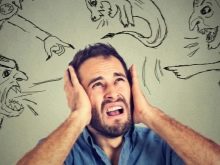

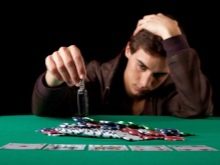
- Clasomania - the need to sing loudly or shout that a person is successfully doing.Such people often join the ranks of the so-called city crazy - they can perform solo songs without accompaniment in the middle of the square or central street, while their vocal abilities are not critically evaluated.
- Kleptomania - pathological craving to steal something. It is not necessary that this will be something very necessary. Sometimes kleptomaniacs themselves do not understand why they stole this or that thing.
- Cleramboerotomania - reinforced concrete, the absolute confidence of the patient that he is the object of love of someone famous (artist, singer, president, Olympic champion). The fact that the patient has never met this person in life does not bother him at all.
- Ctinomania - the pathological need to torture, kill animals, observe their suffering. It occurs with equal frequency in both adults and adolescents.
- Megalomania (megalomania) - a pathological conviction of a person that he was born to become the ruler of the entire Galaxy, well, in extreme cases - at least one or two planets in it. In practice, it can also manifest itself with a false identification of oneself with great and powerful personalities, for example, with Napoleon.
- Persecution mania - the belief connected with delusional installations that the patient is being monitored, they want to kill him.
- Nymphomania - pathological hypertrophic sexual desire in women. It manifests itself in a persistent change in behavior, indiscriminate frequent sexual contacts.
- Addiction - pathological attraction to psychoactive substances.
- Necromania - addiction to corpses. Some refuse to bury a loved one after his death, preferring to leave the corpse at home, while others tend to mock dead bodies.
- Nostomania - pathological desire to return home. Such people often cannot work and study normally, since already upon leaving home they feel an irresistible need to go back. Can not travel.
- Oniomania - shopaholism, a pathological need to shop for shopping. Often people buy up completely unnecessary things in large quantities.
- Onychotillomania - an obsessive desire, the need to mutilate your own nails: bite, break, cut nail plates, pull them out.
- Onomatomania - the need to constantly remember rare and complex words, names, dates, car numbers.
- Pyromania - craving to set fire, look at the fire.
- Sitania - there is a lot of painful need.
- Suicidomania - a strong desire to commit suicide.
- Erotomania - mental disorder against the background of hypertrophied sexual desire, sex in general.




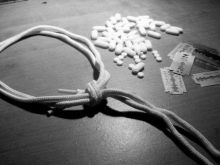

These examples are far from a complete list of manic states. They are found most often. But there are rarer mania in the practice of doctors, for example, theomania in which a person is convinced that God is himself. It turns out to convince with great difficulty.
Causes of occurrence
The reasons why a person develops mania are numerous. Specialists divide them into biological and psychological. The first include possible brain injuries, previous neuroinfections, prolonged severe intoxication, for example, with alcohol or drugs. Biological also includes a hereditary reason - often a mental disorder is inherited from one of the parents or grandparents. Pathological endocrine system, as well as existing concomitant mental illnesses are considered biological factors. Mania most often occurs if there is a bipolar, obsessive or obsessive-compulsive disorder against schizophrenia, prolonged clinical depression.
The psychological causes of the development of mania include the state of prolonged stress to which a person is exposed, the conflict situation at home, at work, in any team where a person spends a lot of time. People with hysterical traits of character, lack of will, and emotionally unstable personalities are more prone to disorder. Specialists pay special attention to the fact that adolescents have additional risks of getting manic disorder, because during the puberty this is facilitated by hormonal changes. If a teenager fell into a “bad company”, became addicted to bad habits or spends a lot of time watching horror films, computer games, then the likelihood of developing mania increases.


Diagnosis is carried out by a psychiatrist using special tests and instrumental examination (MRI, CT, EEG).
Treatment methods
Manic disorders are considered one of the most difficult to cure. But in psychiatry there are time-tested treatment regimens that have proven effective. First of all, patients are offered inpatient treatment. The inpatient will be strict or ordinary, the doctor determines, based on the degree of social danger of the patient. The first stage is drug therapy. For her, antipsychotics are used (Aminazin, Haloperidol). They allow you to take the patient’s condition under control.
This task is not easy, because the patient himself cannot control himself, and therefore high doses of antipsychotics can be used. With their help, increased psychomotor agitation is blocked. Before antipsychotics became known to mankind, electroconvulsive (electroshock) therapy was used to treat mania. It was necessary to expose a person to current discharges at times several times a day. Some doctors are still convinced that it is ESH therapy that is most effective in treating manic syndrome. But studies have shown that antipsychotics are a more humane and faster way to help people cope with the disease. Additionally, benzodiazepines and antipsychotics can be used.
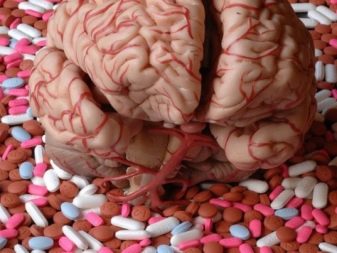
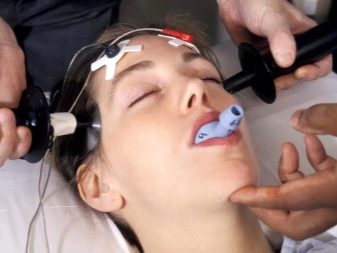
After a course of treatment with medications, a long psychotherapy is carried out, which is designed to help a person form new positive beliefs that will help him get rid of a pathological attraction.
To prevent repeated attacks, antidepressants are prescribed in courses. Relatives of a sick person need to create the most favorable and friendly atmosphere in the family. Psychiatrists noticed that patients who had a difficult relationship with their relatives at the time of starting treatment were more likely to “break down” and tolerate a relapse of the disease. It is possible that relatives will also need help, but already a psychologist.
In psychology, there are many ways and techniques that allow you to change the emotional background in the family. Important! People with mania often lose their legal capacity, can sign their apartment on a stranger, can become victims of a crime or commit it themselves. Therefore, it is recommended that relatives do not wait for sad events, but turn to a psychiatric clinic with a request for forced hospitalization. Perhaps this will require a court decision - it can be obtained according to a simplified scheme if the fact of the disease is diagnosed and proven.


It will be a mistake to persuade a relative to voluntarily go to the doctor for a long time. Practice shows that most people with manic disorders do not recognize the presence of a disease, do not realize it.
It is incorrect and criminal to try to find folk remedies for the treatment of manic disorder, treat a patient with non-traditional remedies, and turn to sorcerers and shamans. This will not help and will only aggravate the situation, because precious time is running out, and advanced forms of mania can be treated much more difficult. With timely access to a doctor, no one undertakes to make forecasts. How to behave a person who was “pulled out” of his beautiful world, where he could do everything, was significant, important, unique, once in reality, it’s impossible to say.Some, after treatment, try to commit suicide. The world around them seems to them boring, dreary, gray. Relapses occur in approximately 45% of cases. In chronic mania, seizures can be repeated up to 3-4 times a year and more often.

That is why the rehabilitation process is of no less importance than treatment, in which relatives, close and friends should take part.
See what’s next video for why mania is dangerous in bipolar disorder.











